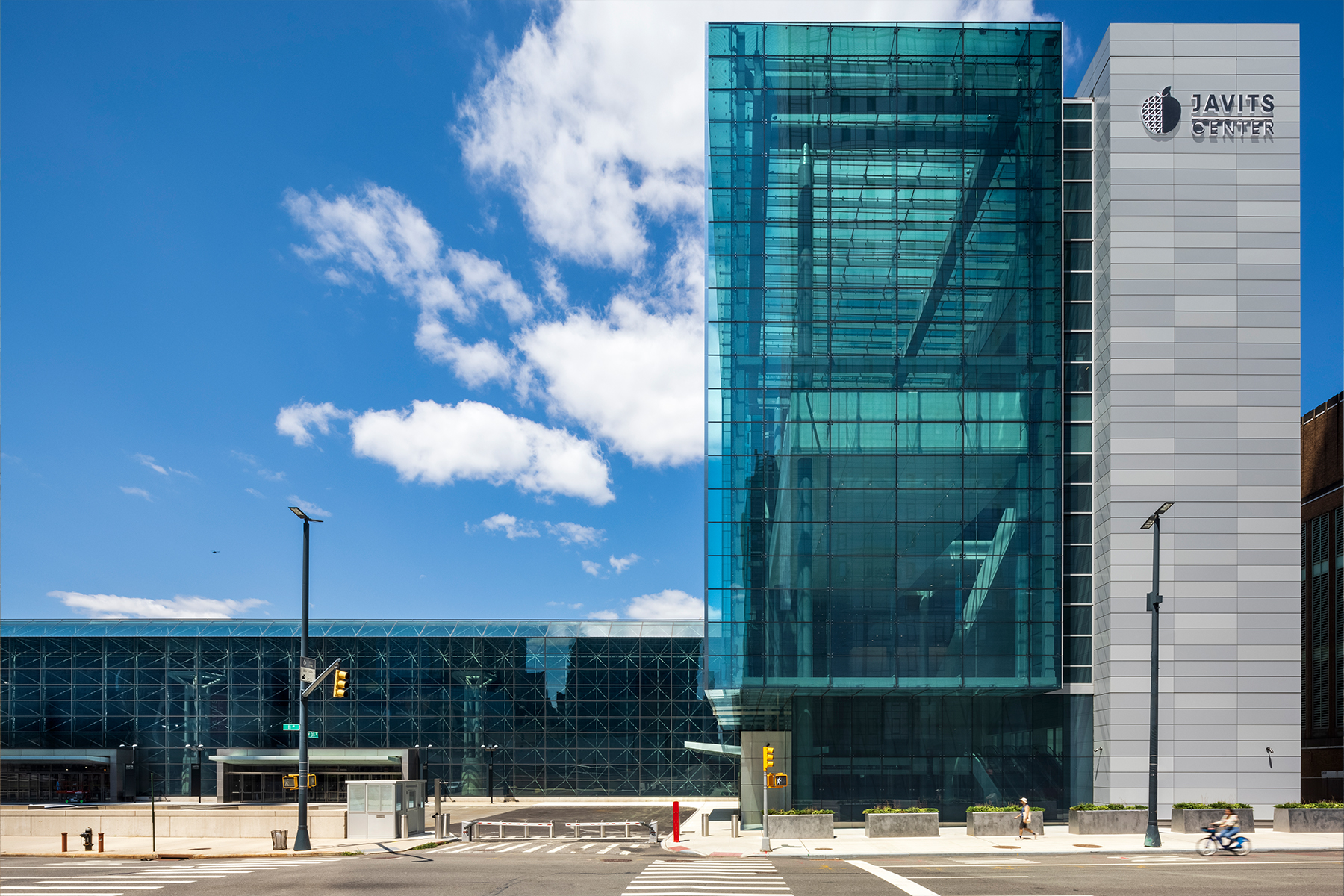
By Derek M. Beaman, P.E., S.E., Chris D. Lubke, P.E., S.E., and Joshua M. Mouras, P.E., S.E.
When New York City officials celebrated the grand opening of the $1.5 billion, 1.2 million sq ft Jacob K. Javits Convention Center expansion in May 2021, they opened the doors to a new venue that not only relied on innovative engineering that solved a host of site- and structure-related challenges but also restored the Javits Center’s position as the largest convention center in the Northeast.
For decades, the Jacob K. Javits Convention Center in Manhattan was a sought-after venue for large-scale events in New York City. Originally opened in 1986, the Javits Center’s 2.1 million sq ft made it one of the largest venues of its kind in America, often hosting events for more than 330 days per year, including the New York International Auto Show, New York Comic Con, the New York Boat Show, and many others.
Over the years, however, as more than a dozen convention centers were constructed or expanded in the United States that surpassed the Javits Center in size, it became increasingly difficult to draw popular events to the convention center. Closer to home, significant developments in the neighborhood — most notably, the adjacent 28-acre, $25 billion Hudson Yards development — were roadblocks to the center’s ability to remain competitive. For the Javits Center, these new venues created delivery truck accessibility issues while reducing parking options and straining operational efficiency.
For the Javits Center to remain a viable and esteemed New York City venue, it needed to increase its revenue and program space, solve its operational challenges, and elevate its place in the competitive convention center market.
In 2006, the Empire State Development Corp. and its subsidiary, the New York Convention Center Development Corp., set the stage by adopting a general project plan to overhaul the venue. This first involved a major renovation of the existing building, including a new facade, additional entrances, a green roof, and significant energy efficiency improvements (completed in 2014). The next step was a northward expansion of the existing building into the adjacent site bounded by West 38th Street and West 40th Street to the south and north, respectively, and 11th Avenue and 12th Avenue to the east and west, respectively.
After the New York State Legislature appropriated $1 billion and approved the expansion, the design-build team, led by the Lendlease Turner Joint Venture, comprising Lendlease Corp. and Turner Construction, was awarded the project via a robust selection process (see “Expansion Timeline” on page 59). With only 42 months to design and construct the Javits Center’s $1.5 billion, 1.2 million sq ft expansion, the team needed to work collaboratively to successfully deliver the project on such a demanding schedule, requiring all stakeholders to provide coordinated information far earlier than normal and often out of sequence.
Site constraints and foundation issues
Significantly impacting the expansion’s design and the project’s ultimate success was its proximity to the Lincoln Tunnel, which extends under the Hudson River, connects New York and New Jersey, and consists of three tubes:
- South tube, beneath the Javits Center’s existing building.
- Center tube, well beneath the Javits Center’s expansion site.
- North tube, beneath the Javits Center’s expansion site but at a much higher elevation, daylighting just east of the project site.
The elevation and structural depth of the expansion’s lowest floor were carefully coordinated by the design team to ensure that the structure cleared and did not impose loads upon the tunnel structure. The work was made more difficult by truck access that crossed the tunnel to facilitate movement between the 12th Avenue entrance and a new loading dock adjacent to the existing Javits Center building.
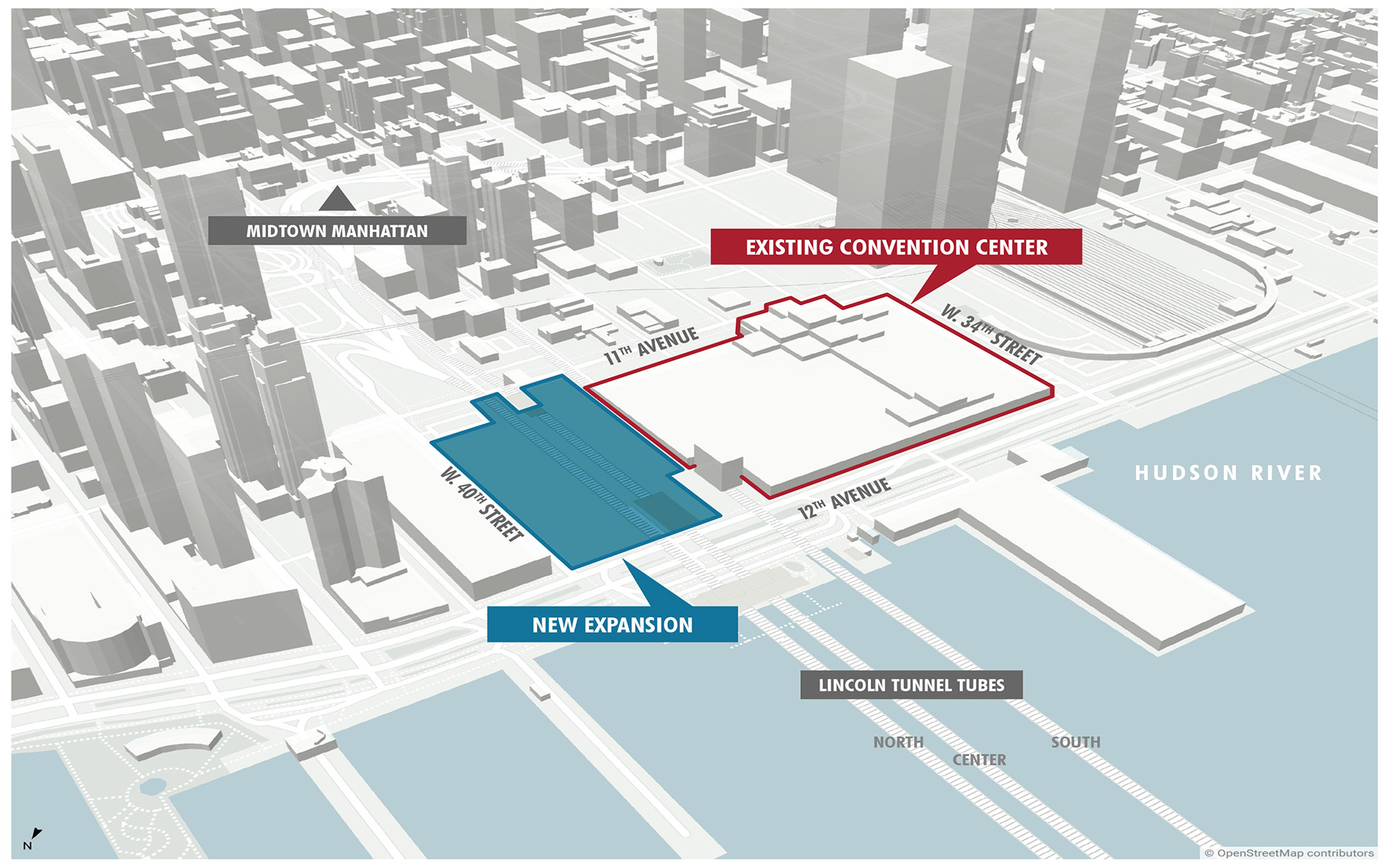
Upon reviewing the as-built drawings for the tunnel to determine its plan location and elevation — both of which were later validated via test pits dug by Lendlease Turner before heavy construction began — the structural elevations were set so that they rose from west to east to support the various program spaces and maintain clearance above the tunnel structure.
However, the geotechnical conditions added complexity to the project’s execution. Most of the expansion site is adjacent to the Manhattan shoreline and located on land reclaimed via the placement of fill between 1836 and the early 1900s. While the surface grades vary somewhat across the site, with a 15 ft elevation difference between 11th and 12th avenues, the bedrock elevations vary much more severely, dropping 60 ft from east to west.
The high column loads associated with a convention center coupled with the poor bearing capacity of soils near the surface demanded a deep foundation system. As a consequence of the conditions, the design-build team opted for rock-socketed drilled caissons. Not only did the layout of the caissons have to avoid the Lincoln Tunnel tubes, which often necessitated the use of transfer-grade beams to support eccentric column loads, but the depth of the rock sockets also had to put the bearing elevation below the 1:1 tunnel influence zone prescribed by the Port Authority of New York and New Jersey.
Furthermore, meticulous planning was required between Magnusson Klemencic Associates, the structural engineer, and Mueser Rutledge Consulting Engineers, the geotechnical engineer, to evaluate foundation settlement, spring constants, and other soil-structure interaction issues.
Based on the data from 155 borings, Mueser Rutledge performed a 3D finite element analysis using a PLAXIS 3D model to determine the vertical and lateral head stiffnesses (spring constants) for each drilled caisson. Incorporating the spring constants from Mueser Rutledge, MKA used ETABS software to analyze the foundation system for all load combinations.
MKA and Mueser Rutledge performed an iterative analysis to ensure the displacements calculated using ETABS and PLAXIS were compatible, and the caissons were designed for the appropriate load envelopes. Without the seamless collaboration between the two firms, the critical path schedule for foundation construction could not have been met.
Flood zone and existing sewer line complications
In addition to the challenges posed by the geotechnical conditions and by the Lincoln Tunnel, the Javits Center’s expansion site is in a noncoastal flood zone, located within the Federal Emergency Management Agency Flood Insurance Rate Map Zone AE. This designation placed the design flood elevation at 15.75 ft NAVD88, which is more than 17 ft above the lowest occupied space.
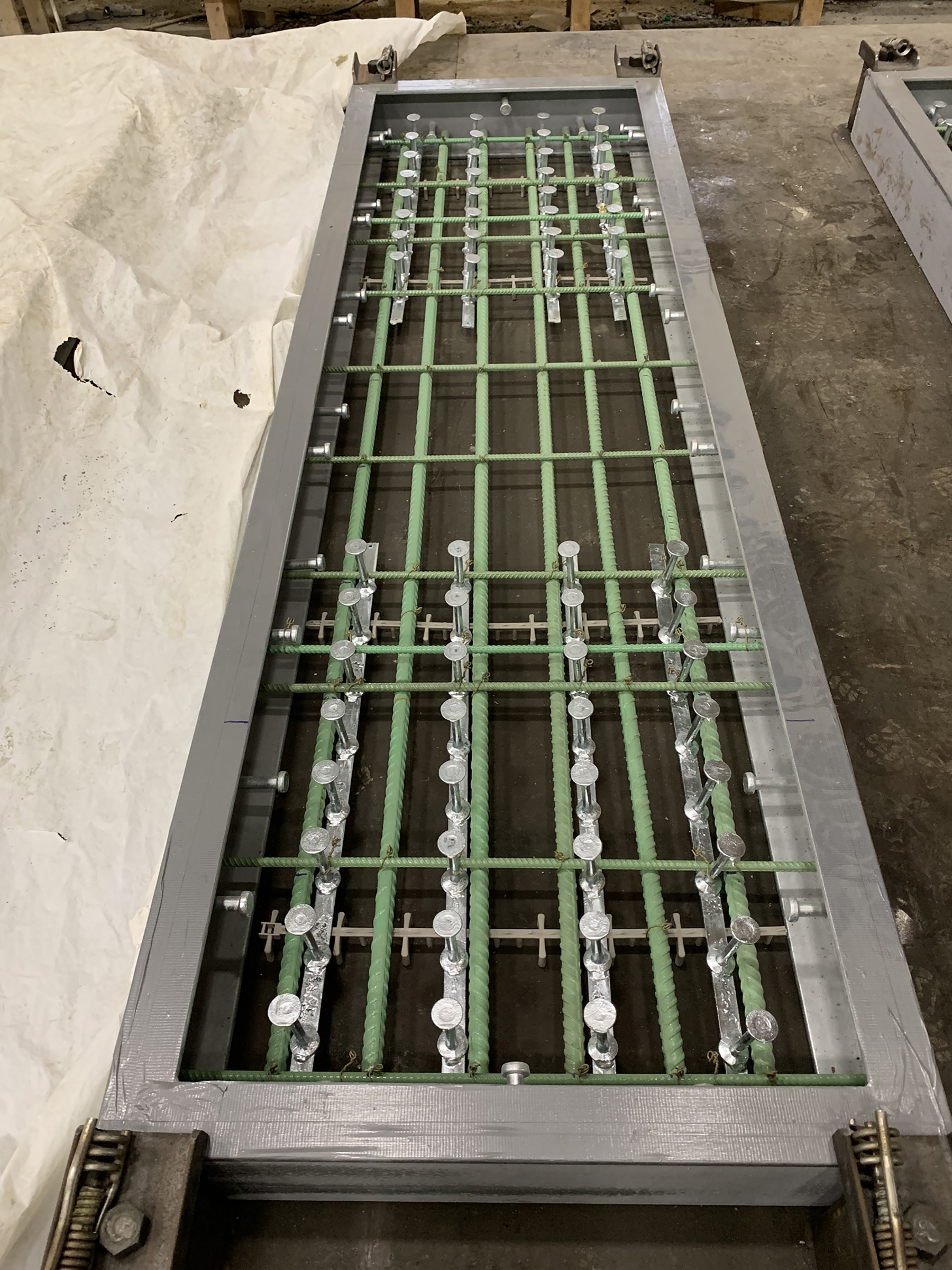
This condition imposed hydrostatic loads that exceeded 1,000 psf on the below-grade structure — a demanding condition for the foundation walls, which had to be designed for soil, seismic, and surcharge pressures in combination with the hydrostatic pressures.
To combat the hydrostatic uplift pressures on the lowest floor structure, the design-build team implemented a mild-reinforced-concrete pressure slab foundation system ranging in thickness from 15 in. to 45 in. Spanning up to 60 ft between caissons and grade beams, the slab thicknesses were optimized to support the significant dead and live loads associated with the program and resist the uplift pressures in the most economical and constructable manner possible.
An existing sewer line under what was at one time West 39th Street bisected the site. This utility could not be rerouted, and due to its age and condition, it required replacement. But the challenge did not stop at simply replacing it in kind. In its permanent condition, the line had to be accessible for maintenance along its entire 66o ft length, which meant it could not be buried beneath the pressure slab.
Through methodical planning with Stantec, the civil engineer, MKA designed a folded pressure slab that created a sloping trench across the entire site to support the sewer line. The walls of the trench were designed as upturned grade beams to ensure that the trench’s structural depth was minimized. This was critical, as the sewer line crossed the north tube of the Lincoln Tunnel.
To provide permanent access for maintenance, concrete lift-out panels were incorporated along the entire length of the trench. These panels support the wheel loads associated with tractor-trailers, as the drive path to the lower loading dock sits atop the trench.
A straightforward sewer replacement it was not.
Superstructure design
Structural design obstacles did not stop at grade, as the identification and design of the superstructure systems required equal parts painstaking collaboration and well-ordered coordination. The primary problem was identifying the ideal framing system for each level of the building to carry the required loads, deliver on the performance requirements, and provide structural depths that allowed for the critical floor alignments required by the overall program.
The design-build team organized the project program into two primary components: the truck marshalling building block, comprising the vast area required for truck loading/unloading, marshalling, and storage (on the north side of the site), and the expo building block, comprising the exhibition hall, meeting room, and ballroom programs and associated prefunction/lobby spaces (on the south side of the expansion site adjacent to the existing building).
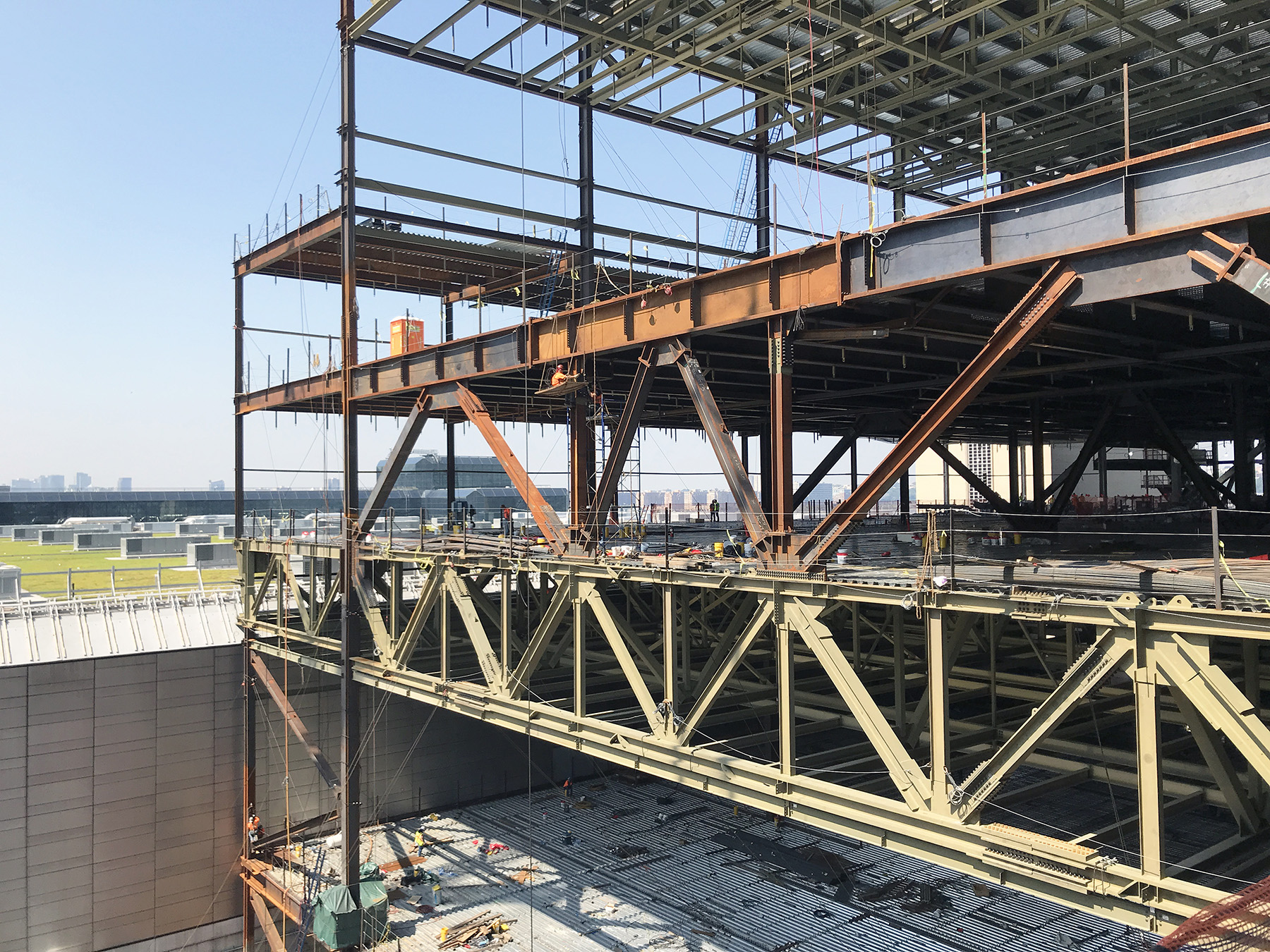
Various structural system options were evaluated for each level of each program block to ensure cost and schedule effectiveness, constructability, satisfaction of the required column spacings and clearance, and proper alignments of the critical program elements. The program elements are:
- Lower loading dock alignment with existing lower exhibition hall.
- Exhibition hall alignment with existing upper exhibition hall.
- Exhibition hall alignment with upper loading dock.
- Meeting room program alignment with accessible green roof outdoor space.
- Meeting room prefunction/lobby clearance above existing roof.
To deliver the required space for the four-level truck marshalling building block and meet the required floor alignments, numerous structural systems were proposed. MKA and Lendlease Turner rejected the options that did not leverage cost, subcontractor availability, and structural depth. The structural system that hit all the marks was a two-way, mild-reinforced, concrete flat-plate system. The system employs spans of up to 60 ft that support live loads of 300 psf, 18-24 in. slabs reinforced with epoxy-coated rebar, stud rails to resist shear at the columns, and concrete with a design strength of 10,000 psi.
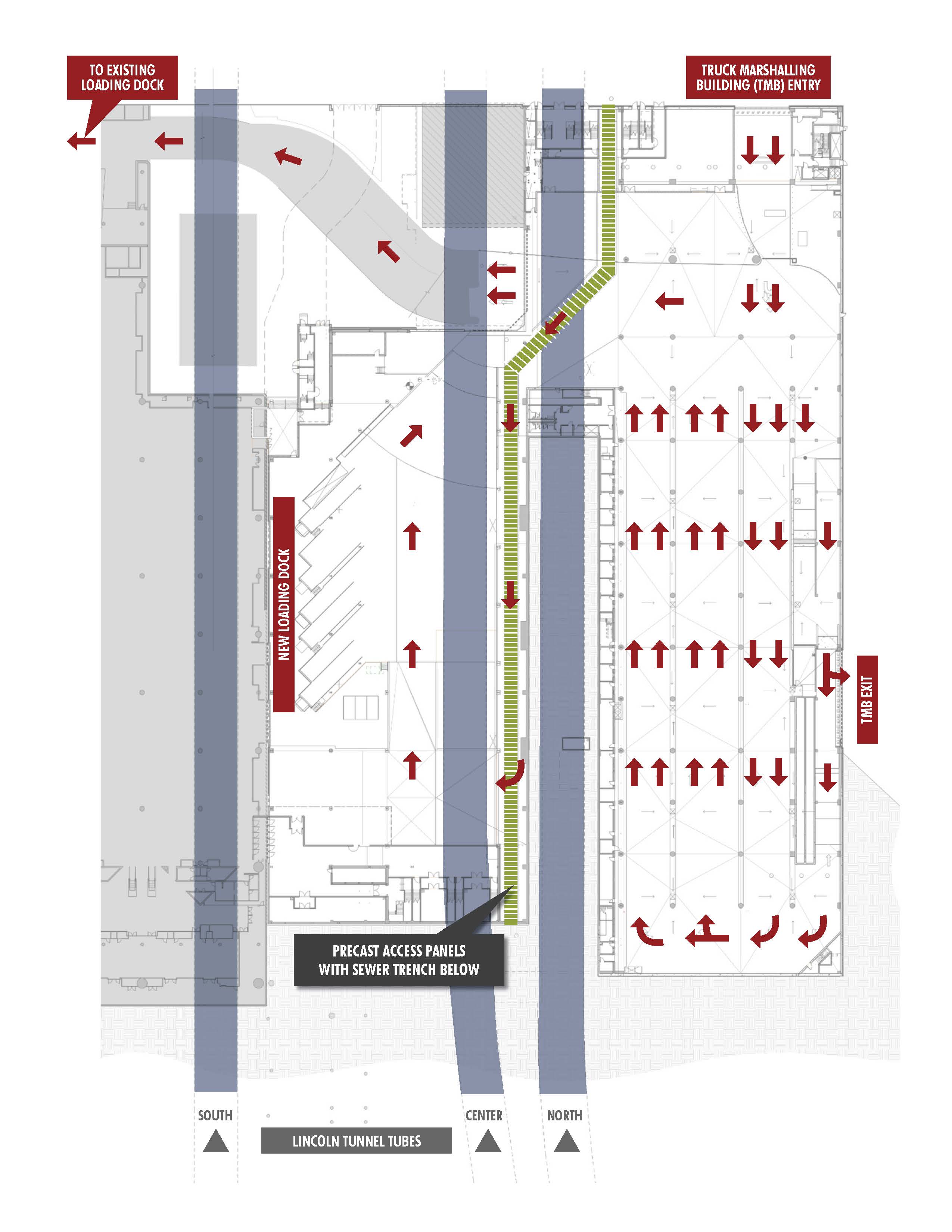
This system’s highly efficient construction via flat formwork and the early start of superstructure construction using materials not requiring long lead times provided the key to unlocking the delivery of this vital program component.
Two critical components of the superstructure had to be identified for the expo building, the first of which was the floor structure for the exhibition hall that spans above the lower loading dock. Lendlease and MKA chose built-up steel plate girders spaced 45 ft apart because they needed to support an exhibition hall live load of 350 psf, span up to 110 ft to provide for truck movements in the loading dock, and have depths limited for the required truck clearance below.
The more traditional approach of open-web steel trusses was considered, but with depths limited to 10 ft, plate girders proved more capable of providing the necessary strength and stiffness, and with less fabrication required, they were more economical.
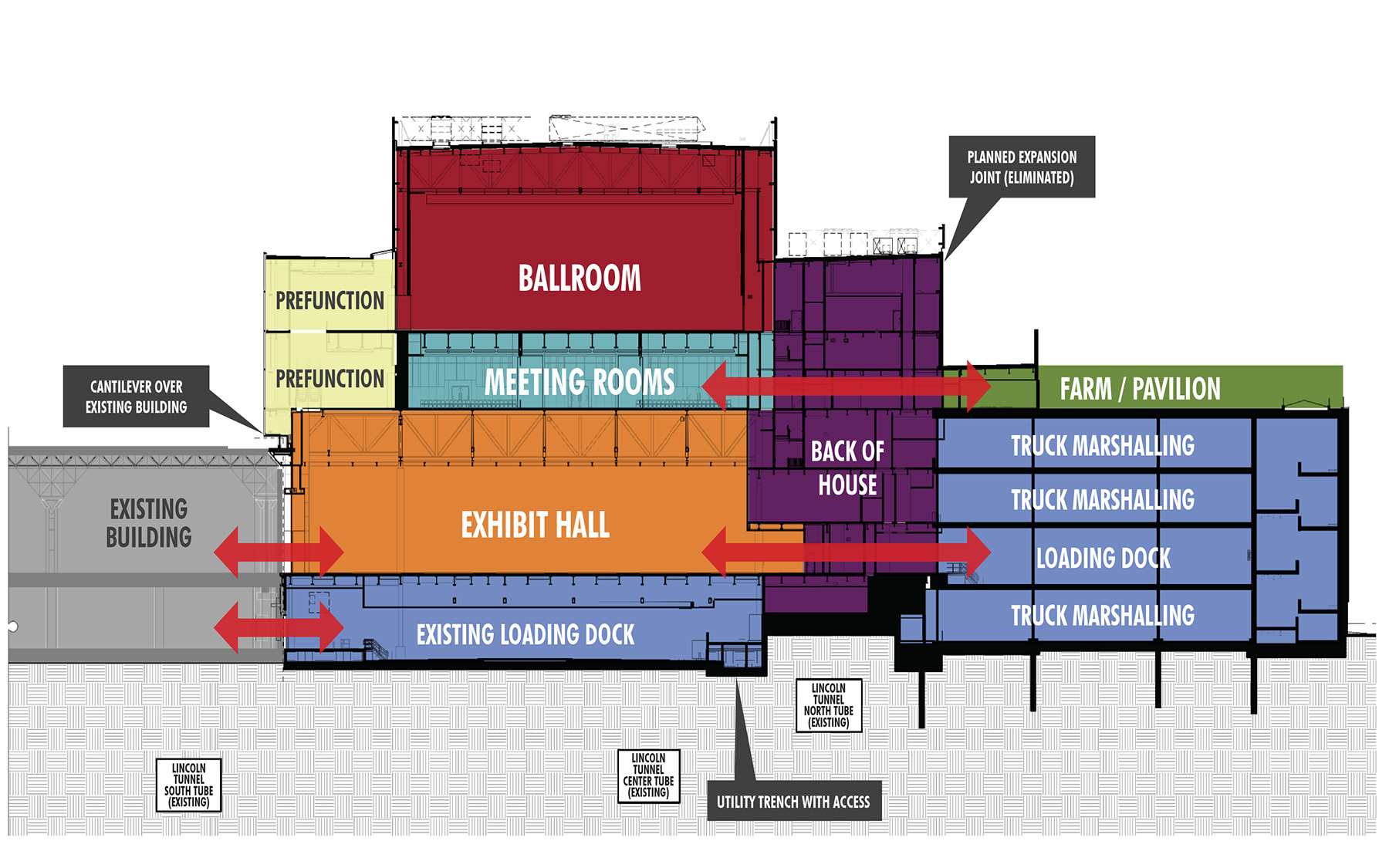
PROGRAM ALIGNMENT (Image courtesy of Magnusson Klemencic Associates)
The second challenge related to system selection involved identifying the ideal approach to supporting the meeting room and ballroom levels above the exhibition hall. The design and structural hurdles associated with supporting the 250 psf and 125 psf live loads at the ballroom and meeting room levels, respectively, were far surpassed by the need to control floor vibrations during ballroom dancing events.
Rather than implement a traditional floor-by-floor framing system, an innovative interstitial truss system was developed by which trusses, spaced 90 ft apart, housed the meeting room level within their depths.
A hyper-efficient truss depth of 45 ft was naturally defined by the secondary floor framing at each level in combination with the required programmatic clear height for the meeting room program. Not only did this solution deliver on the strength, serviceability, and adjacency requirements, it afforded a span of 150 ft over the exhibition hall, vastly exceeding the owner’s desires for 90 ft by 90 ft column spacing in that area.
Revamped and ready for business
The revamped and expanded Javits Center opened in May 2021. The project increased the size of the building by about 50% — from 2.1 million sq ft to 3.3 million sq ft — restoring the convention center’s position as the largest in the Northeast. The newly expanded building boasts the right mix of program spaces, provides vastly improved operational efficiency, and removes about 20,000 event-related trucks from the already congested streets of Manhattan.
Innovative solutions to the myriad site- and structure-related challenges, as well as team collaboration early in the design phase, were necessary to execute the project’s goals and accommodate evolving COVID-19 safety protocols. These efforts allowed the Javits Center to open at the most opportune time, as trade shows and conventions returned to serving their roles as essential gathering places.
SIDEBAR
Jacob K. Javits Convention Center expansion timeline
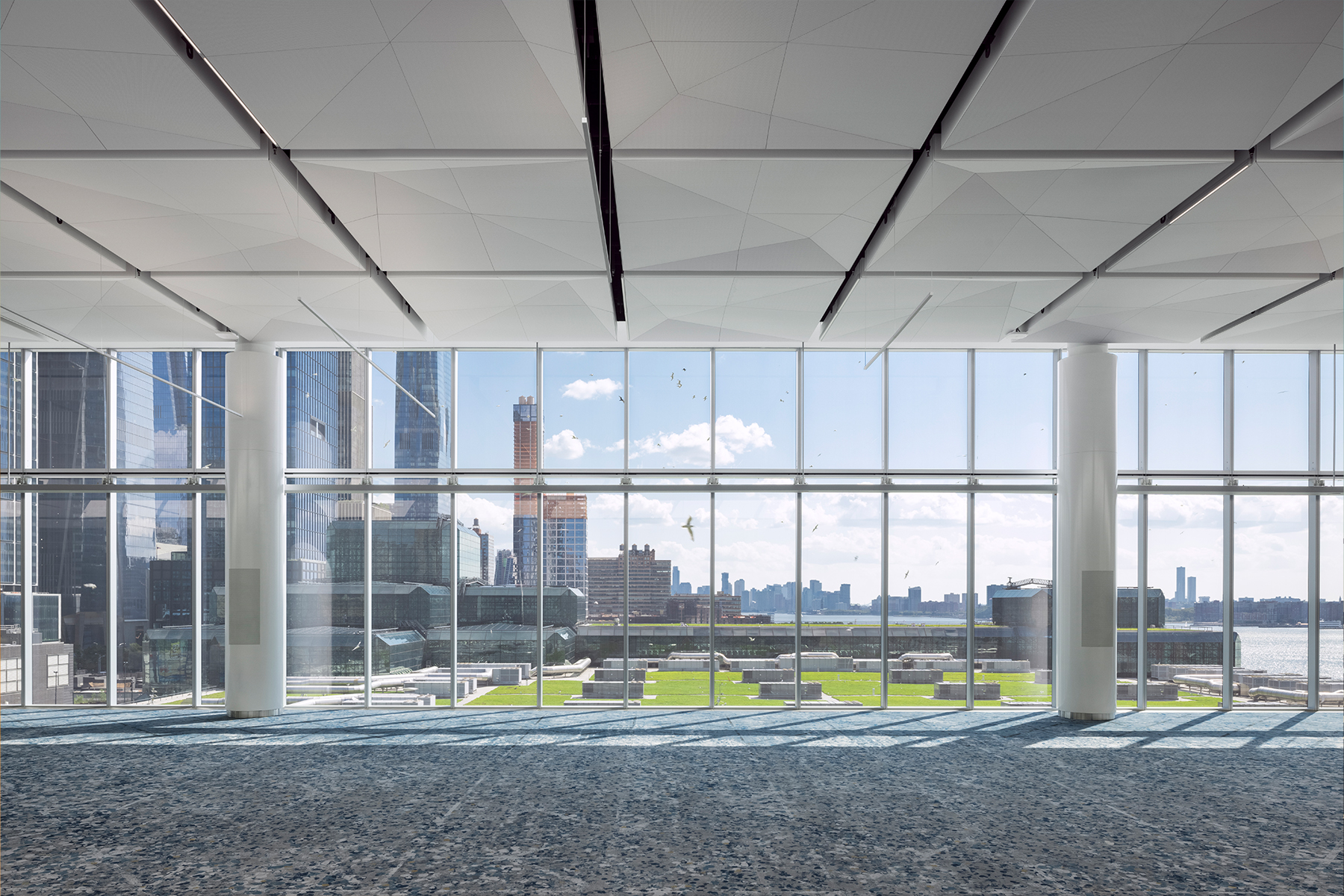
April 2016
A request for qualifications for design-build teams for the Javits Center expansion is issued, and a shortlist of three teams is identified to receive the request for proposals, which emphasized cost savings, expedited project design, and an efficient construction schedule that delivered on the following program elements:
- 480,000 sq ft for loading/unloading, marshalling, and storing 229 trucks.
- A 90,000 sq ft exhibit hall adjacent to the existing hall, thereby offering 500,000 sq ft of combined and contiguous space.
- 45,000 sq ft of meeting rooms.
- A 55,000 sq ft column-free ballroom.
- A 115,000 sq ft prefunction/lobby area.
- A 12,000 sq ft roof terrace and 15,000 sq ft pavilion for special events large enough to accommodate 1,500 people.
June 2016
The teams embark on a design-build competition lasting four months and comprising two scoring components — technical proposal and price proposal — weighed equally in the final selection. The owner holds multiple meetings with each team during the competition to discuss their proposals.
January 2017
The Empire State Development Corp.’s selection committee chooses Lendlease Turner Joint Venture to lead the project’s design-build team. This leaves 42 months to design, construct, and complete the project on a fast-track construction schedule that overlaps the design phase and calls for deep foundation construction to begin seven months before design completion.
The design is developed in three months, while the construction documents — including 13 early structural procurement, permit, and construction packages carefully identified and coordinated to support the project’s aggressive schedule — are prepared in 11 months.
May 2021
New York City celebrates the grand opening of the Jacob K. Javits Convention Center expansion.
Derek M. Beaman, P.E., S.E., is a senior principal, Chris D. Lubke, P.E., S.E., is a principal, and Joshua M. Mouras, P.E., S.E., is a senior associate in Magnusson Klemencic Associates’ Seattle office.
Project credits
Client: Empire State Development Corp., New York City
Design-builder: Lendlease Turner, a joint venture of Lendlease Corp., New York City, and Turner Construction, New York City
Architectural design team: TVS Design, prime architect, Atlanta; Moody Nolan, Nashville, Tennessee; and WXY, New York City
Structural engineering team: Magnusson Klemencic Associates, prime structural engineer, Seattle; and Casco Bay Engineering, Portland, Maine
Mechanical, electrical, and plumbing engineer: Jaros, Baum & Bolles, New York City
Civil engineer: Stantec, New York City
Geotechnical engineer: Mueser Rutledge Consulting Engineers, New York City
This article first appeared in the September/October 2022 issue of Civil Engineering as "Meeting the Moment."
Images 1 and 7 were provided by Esto.





